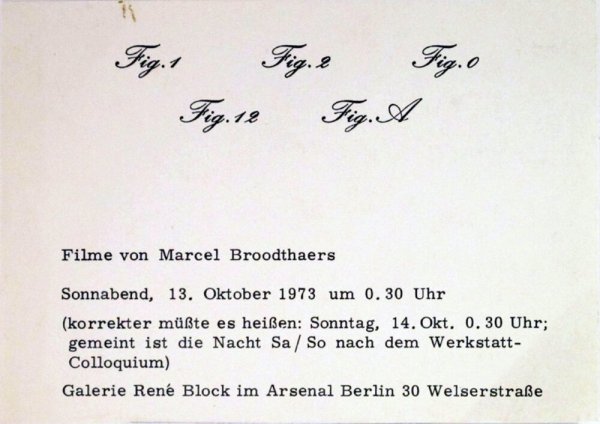Marcel Broodthaers
Marcel Broodthaers (Brussels, 1924 – Cologne, 1976) was one of the major artists of the twentieth century. After abandoning his chemistry studies, he published his first book of poems in 1945. In the forties and fifties he continued to write poetry and worked as a journalist, and in 1957 he made his first film. In 1964 he began using other visual media such as photography, collage and objects, and he went on to produce an extensive body of graphic, film and text work that never strayed far from poetry. He was heir to the surrealism of Duchamp and Magritte, and he took his profound reflections on art and the museum as an institution to their logical conclusions.
Broodthaers constructed paradoxical objects and used all kinds of materials (many taken from nature) in his work, which is rooted in language. He used irony, hieroglyphs, and fragments of texts by nineteenth century authors (Baudelaire, Mallarmé, Dumas and La Fontaine) to sharpen and broaden the anti-bourgeois and anti-social critique of his works. Broodthaers, who produced more than a hundred cinematic works, was the creator of a new genre that merged film, still images, language and objects. His works can be found in major collections such as the New York MoMA, the Tate Modern in London, the Stedelijk Van Abbemuseum in Eindhoven, the Centre Pompidou in Paris and MACBA.











![Marcel Broodthaers / [editor in chief, Wilfried Dickhoff]](https://img.macba.cat/public/styles/large/public/imagenes/archivo/documento_archivo_A03647.jpg?itok=PnhIM5Yx×tamp=1589220469)



